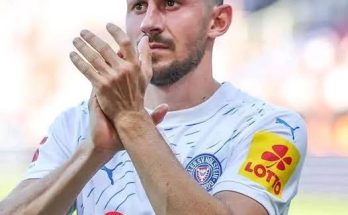Shai Gilgeous‑Alexander’s ascent to NBA superstardom mirrors the meteoric rise of Kobe Bryant in countless ways. At age 26, SGA stands at the pinnacle of a transformative season, leading the Oklahoma City Thunder to a record-setting 68-win season en route to the NBA Finals. His performance has earned him the 2024–25 regular-season MVP, and he now sits tantalizingly close to a Finals MVP—a historic trifecta that underscores his evolution into one of the league’s all-time greats .
Shai’s statistical lineage reveals clear parallels with Kobe’s peak years. In the 2024–25 season, SGA averaged an astonishing 32.7 points, 5.0 rebounds, 6.4 assists, and 1.7 steals per game—numbers that not only led the league but also rivaled legends at their absolute best . That 32.7 PPG is directly comparable to Kobe Bryant’s career-high 35.4 in 2006, and Shai’s elite efficiency—51.9% FG, 37.5% 3P, 89.8% FT—puts him in the same conversation as the Mamba himself .
But the comparison runs deeper than points and percentages. Like Kobe, Shai thrives in the mid‑range game. He’s one of the few players in the modern NBA to drive more than 20 times per game and is notorious for pulling up or fading away between the arc and the paint—just as Kobe did with cold-blooded precision . His ability to bait defenders and draw fouls mirrors Michael Jordan and Kobe’s signature playstyle; he led the league with 669 free throw attempts this season, ranking among the most in NBA history .
That free‑throw dominance, however, has spurred debate. Some label him a “free‑throw merchant,” but analysts like Kendrick Perkins defend him vehemently. Perkins noted, “We used to applaud Kobe, [Michael Jordan], Tim Duncan, Kevin Garnett, Paul Pierce for being able to get to the free‑throw line… People are trying to create a narrative because you can’t stop him” . This echoes the reverence afforded Kobe for his ruthless competitiveness and willingness to fight through contact.
Shai didn’t merely dominate during the regular season. In the playoffs, he’s maintained his elite play: 29.8 PPG on 58% true shooting, guiding OKC past the Timberwolves and into the Finals . In the Western Conference Finals, he was overwhelming—31.4 PPG, 5.2 RPG, 8.2 APG, and 1.8 SPG—earning the WCF MVP and reinforcing his status as the team’s alpha . Now in the Finals, Shai delivered 38 points, 5 rebounds, and 3 assists in Game 1—a debut filled with Kobe-like midrange precision and clutch DNA, prompting analysts like Danny Green to draw explicit comparisons: “He reminds me of Kobe… a lot of fundamental” .
Yes, Game 1 ended in a heartbreaking loss—a story as old as Kobe’s playoff journey—but Shai’s steely calm response hinted at something more enduring. “It’s not rocket science,” he said postgame, exuding the kind of unshakeable confidence and unfiltered truth-telling that typified Bryant’s leadership . That professionalism—seeking to learn and improve instead of deflect—sounds familiar to anyone who followed Kobe’s post-game ethos.
Beyond narrative echoes, the numbers lend compelling context. A statistical breakdown reveals Shai exceeding Kobe’s seventh-year outputs across multiple categories. Shai’s 32.7 PPG eclipses Kobe’s 30.0; his 6.4 assists surpass Bryant’s 5.9; and he even edges him out in steals and blocks per game . Adjusted scoring metrics paint Shai as a historically efficient scorer, with an inflation-adjusted PTS/75 of 34.7—leaning close to the paradigmatic 36.8 of Kobe’s 2005–06 miles-high season .
Yet, beyond raw data, it’s Shai’s cerebral, methodical approach that echoes Kobe. His mid-range pull-ups and footwork aren’t showy—they’re surgical. Teammates describe him as calm under pressure, willing to attack, pass, rebound, and defend with equal fervor. His leadership-by-example recalls stories of early Bryant, drawing respect rather than forcing it.
SGA’s narrative arc aligns with Kobe’s path in other respects too. In his seventh season, Kobe had become a bundle of kinetic energy, an offensive wrecking ball on the rise to dynasty mode. Shai’s seventh season culminated in an MVP while steering OKC to the second-best net rating ever posted in a 68-win season . This convergence in timing—year seven, MVP, superstar status—makes the comparison uncanny.
His Game 1 Finals performance wasn’t just stat-padding—it was character-defining. Starting slow for OKC, Shai took control early, diving into his mid-range repertoire, engineering step-back threes and floaters with clinical precision, much like Kobe in 1997 when he first emerged as a Finals-caliber guard . Observers noted how he set the tone with 19 first-half points on 8/12 shooting. He didn’t hesitate, he didn’t flinch—two traits emblematic of the Black Mamba’s greatest moments .
Shai’s footwork is another bridge to Kobe’s legacy. Video analyses trending online show him using changes of pace and subtle fakes to create space before pulling up for mid-range jumpers—a direct reflection of Bryant’s cinematic moves . These mechanics betray hours of disciplined practice and a mindset aimed at mastery—a hallmark of Bryant’s legendary work ethic.
But Kobe isn’t just remembered for scoring. His legacy was forged by relentless demand for excellence, leadership, and icy resolve under pressure. Shai is writing his own version: with every clutch bucket, every conversation with coaches and teammates, every post-loss moment in the locker room, he affirms that he’s not just a high-scoring guard—he’s the heartbeat of a franchise on the cusp.
If Shai brings home the Finals MVP, he’ll be the first since LeBron in 2013 to win both the regular season and Finals MVP in the same year—and the first Kentucky alum ever to do so . That places him in an elite bracket: Jordan (1998), Kobe (2009), LeBron (2012, 2013), and now potentially SGA. Based on performance, pedigree, and position, the thunder might tremble the earth again.
Critics may argue it’s premature to align him with Kobe—Bron always cautioned against forced comparisons. Context matters. Kobe’s journey included five championships, 18 All-Star appearances, clutch series, and narratives that defined an era. Shai has neither rings nor two decades of legacy. Yet, he’s blazing a path similar in form, if not yet in history.
Right now, Shai lives in the moment: finals swaying, series on the line. His mindset—learn from loss, adapt, respond—is all too Bryant-esque. “It’s not rocket science.” That phrase wouldn’t feel out of place coming from Kobe, a man who valued simplicity through excellence. It shows Shai understands his role, his responsibility, and the weight of legacy without losing calm.
In many ways, Shai’s story is still unfolding. A Kobe comparison can’t capture his full identity—he’s Canadian, unfiltered, more naturally collaborative than Bryant, preternaturally calm yet unafraid to dominate. And unlike Kobe, who embraced dramatic flair, Shai is subtle—a silent assassin in full awareness, pushing the boundaries of conventional guard play.
That said, the hallmarks—high-volume mid-range scoring, elite free-throw generation, relentless defensive anticipation, court management, postseason MVP-worthy performances, dramatic confidence—align closely with what made Kobe Bryant legendary. The seven-season inflection point, combined with his statistical domination, leads fans and analysts to frame him as “the next Kobe” ﹘ not in accolades yet, but in blueprint.
This isn’t hyperbole—it’s careful reading of the current moment. In 2025, SGA stands as this season’s MVP, a Finals juggernaut, a leader of a top-tier defense, and the fulcrum of the league’s most efficient offense . His Game 1 performance—a bold statement—further cemented his claim, drawing praise from peers like Danny Green and opening comparisons to Kobe’s Finals breakout .
But again: the shadows of legacy loom large. Kobe’s story spans decades, championships, clutch moments, public highs and lows. Shai is only seven seasons in. He’s writing his tale, chapter by riveting chapter—if he secures the championship, backs it with more postseason dominance, and sustains this performance for another decade, the Kobe label may evolve from shorthand into history’s judgment.
Yet for now, he deserves the mantle as the latest standard-bearer for scoring excellence, competitiveness, and mid-range mastery—a “Kobe of his generation” in terms of statistical impact and stylistic convergence. His narrative is fresh, untainted; his ceiling is sky-high. The next act—finals outcome, career longevity, future rings—will determine how deep the Kobe parallel extends.
What’s undeniable today: Shai Gilgeous‑Alexander is shining at an elite level, embodying traits that made Kobe Bryant legendary, while carving his own identity. To watch him is to feel echoes of Mamba Mentality—quiet focus, confident aggression, disciplined excellence. The Black Mamba’s legacy may be unique, but SGA is writing a chapter equally compelling, and just perhaps, history will see this as the moment Kobe’s torch passed gently into capable hands.


